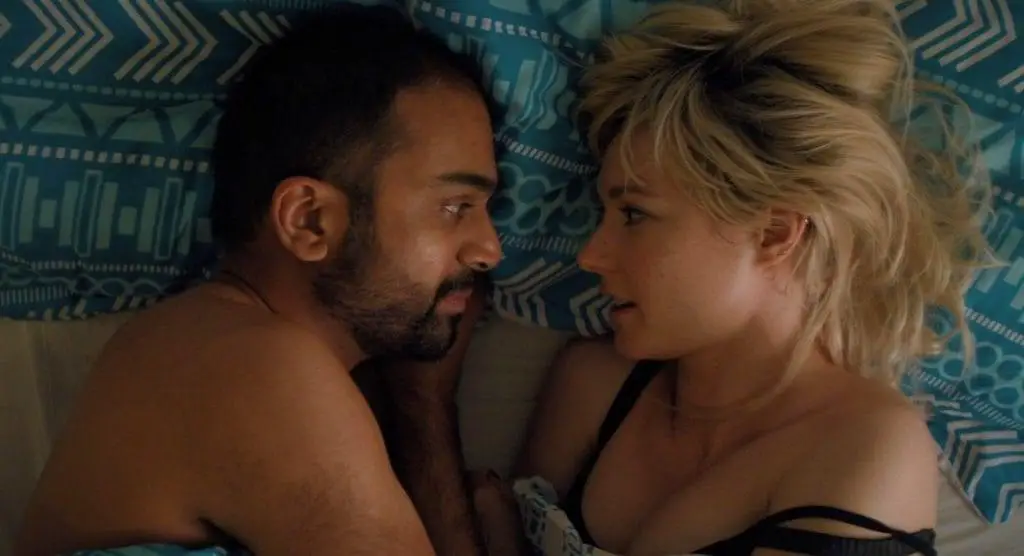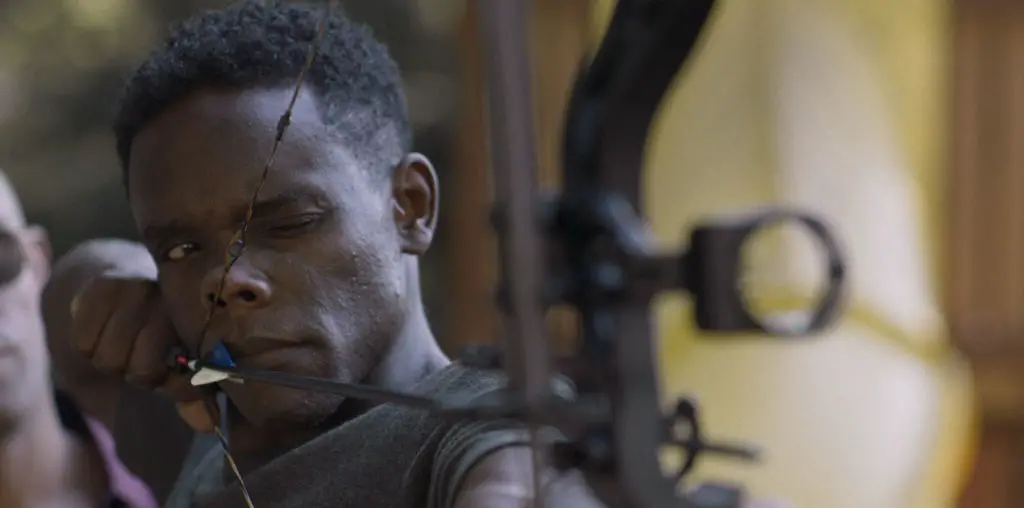
Similar to his short film Peace & War, Alan Gorg’s Prophecy & Pollution is made up of three smaller films. In this case, however, the three pieces add up to a feature film focusing predominantly on the Hopi tribe and their belief that to damage the land will cause suffering for all, and how pollution, in particular that brought about by coal mining, oil drilling and nuclear energy, will fulfill that prophecy.
The first segment is a 1970’s documentary entitled Autobiography of a Hopi. This sequence sets up a bit of historical background on the Hopi tribe, and as a standalone effort, is a very strong, quality short documentary effort. We learn about the tribe and their efforts to remain living harmoniously with the land around them, which eventually comes in direct conflict with corporations that come into the area to drill for oil and bring power lines in.
It is this conflict that becomes the background for the second segment of the film, a narrative short entitled Earth Spirit that focuses on a family of Hopi dealing with their own dysfunctional family issues while trying to decide whether to allow developers to invade their land, disrupting the Earth but, at the same time, bringing modern day conveniences to the region.
While this sequence dances a bit too close to the television movie-of-the-week aesthetic with some questionable, over-the-top acting choices, similar to the documentary preceding it, Earth Spirit is another strong standalone effort. That said, I can understand how the two shorts complement each other, as the narrative draws strength from the history lesson via the documentary, and is all the better for it.
The final sequence is the animated satire, Third World Investment Seminar. Similar to the animation and archival footage mix in the earlier mentioned short film Peace & War, this segment predominantly focuses on a crudely animated Milton Friedman and Ayn Rand as they make the positive case for coal mining, oil drilling and nuclear energy in third world countries while archival and news footage give credence to the contrary opinion. Of the three segments, this is the weakest, though I can understand its inclusion to try and tie together the themes of damage to the Earth and society that are brought up in the previous two segments.
Unfortunately, for me, wrapping up the film with the animated segment left a bad taste in my mouth, which is unfortunate because the first two segments deserve much better. That said, apparently the first two segments have been paired together without the third segment before, in a film project entitled Techqua Ikachi: Aboriginal Warning, so that could be worth tracking down if you have any interest in the above. For me, the opening documentary is by far the treasure of the whole, and the film does go downhill from there, but not rapidly so until the final animated sequence.
This film was submitted for review through our Submission for Review system. If you have a film you’d like us to see, and we aren’t already looking into it on our own, you too can utilize this service.


Thank you for reviewing my educational videos PROPHECY&POLLUTION and PEACE&WAR.
My apologies that the concluding section of PROPHECY&POLLUTION, the THIRD WORLD INVESTMENT SEMINAR, left a bad taste in your mouth. Probably i should have warned you these two movies are not focused on entertainment but rather on education, as my hope has been to get educators to use them to provoke student discussion, as i believe they are, if nothing else, provocative. I do not blame you nor anyone else for not wanting to look at the images in THIRD WORLD INVESTMENT SEMINAR. I do not like to look at them. But i believe they need to be looked at, because those images bring home as nothing else can what are the real effects of what is beng done to the Earth, especially in third world countries. You are right that people do not want to look at such images, but students at least can hopefully be shown them as learning tools.
Although the images in the conclusion of the film are painful, i remember when i saw those pathetic children, i was so horrified that i could not rest until i found something within my power to do which might help prevent more such, and thst is why i did the film. Hopefully, motivated educators can and will use this visual tool to get beyond mere words in helping students and public absorb and react to the reality of what has been going down.
Peace, joy, and prosperity,
Alan Gorg
http://alangorg.wordpress.com